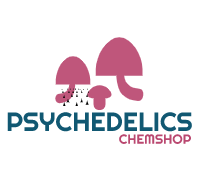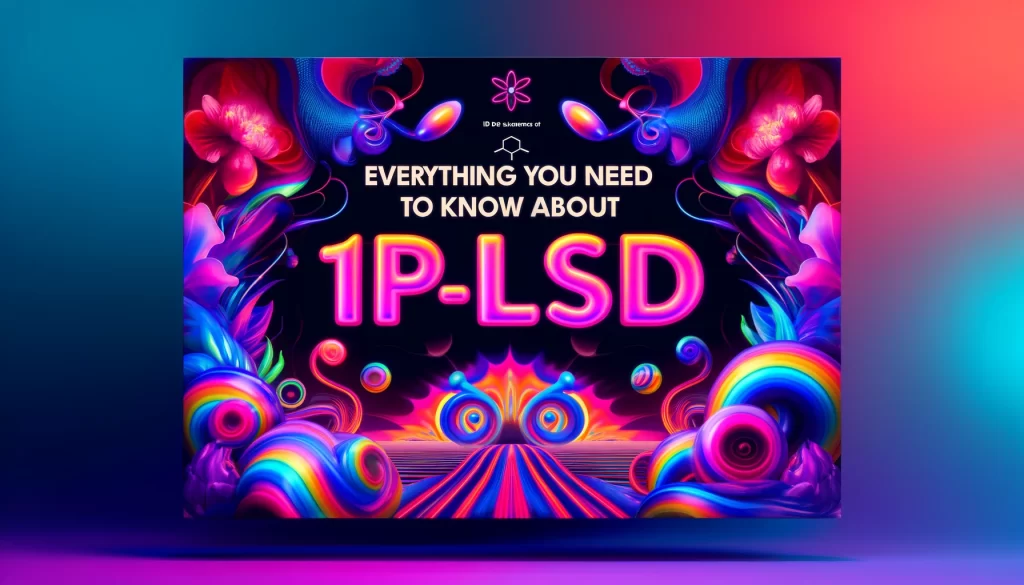No products in the cart.
LSD
Everything You Need to Know About 1P-LSD: A Comprehensive Guide
Introduction to 1P-LSD
1P-LSD, or 1-Propionyl-D-lysergic acid diethylamide, is a research chemical closely related to LSD (lysergic acid diethylamide). It gained popularity among psychedelic enthusiasts as an alternative to LSD due to its similar effects and legal status in some countries. It is a “prodrug,” meaning that it is inactive until metabolized by the body, where it converts into LSD, producing the familiar psychedelic effects.
In this article, we will explore everything you need to know. Including its chemical structure, effects, safety profile, and legal status.
Chemical Composition and Origins of 1P-LSD
1P-LSD belongs to the lysergamide family, which includes ALD-52, and other similar compounds. The primary difference with LSD lies in the addition of a propionyl group (a propionyl ester) attached to the nitrogen atom of the lysergic acid molecule. This minor structural change allows it to be metabolized into LSD by enzymes in the body, producing the same psychedelic effects.
1P-LSD was first synthesized in the early 2010s and quickly entered the market as a legal alternative to LSD. As a prodrug, it shares many similarities with LSD in terms of effects, duration, and intensity. However, its unique chemical structure has made it a subject of interest in the research chemical community. Despite its similarities to LSD, it is considered a distinct substance and should be approached with caution.
Effects and Experiences: What to Expect
The effects of 1P-LSD are often described as being nearly identical to LSD, with users reporting enhanced visual and auditory perceptions, deep introspection, and a distorted sense of time. However, there are some subtle differences in the onset, intensity, and duration of effects.
Typical effects include:
- Visual distortions: Colors may appear more vibrant, and users might experience intricate patterns, fractals, or even closed-eye visuals.
- Auditory changes: Sound may seem more intense, and music can take on new layers of complexity.
- Cognitive and emotional effects: Many users report heightened creativity, euphoria, and profound self-reflection. Some also experience moments of spiritual insight or intense emotional release.
- Time distortion: Time may appear to stretch or contract, leading to an altered sense of the passage of time.
The duration of the effects typically lasts between 8 and 12 hours, with the peak of the experience occurring 2 to 3 hours after ingestion. While the effects are often enjoyable, they can also lead to anxiety, confusion, or a sense of being overwhelmed, especially at higher doses.
The Safety Profile of 1P-LSD
1P-LSD is generally considered to be safe when used responsibly, but as with any psychedelic, there are potential risks. The lack of long-term clinical studies on 1P-LSD means that its full safety profile is still unknown. However, the substance is chemically similar to LSD, which has been studied extensively.
Known side effects of 1P-LSD include:
- Nausea: This is often experienced in the initial stages of the trip, but it usually subsides after the first hour or so.
- Anxiety or paranoia: At higher doses, or in individuals who are not in the right mental state, 1P-LSD can induce anxiety, panic attacks, or even paranoia.
- Increased heart rate and blood pressure: Like LSD, 1P-LSD can stimulate the cardiovascular system, which may pose a risk for individuals with pre-existing heart conditions.
It’s essential to use 1P-LSD with caution, particularly in unfamiliar settings or without trusted company. As with any psychedelic, the environment, mental state, and dosage all play a critical role in ensuring a safe experience.
Additionally, since 1P-LSD is often unregulated, the purity and potency of the substance can vary, making it important to acquire it from a trusted source.
1P-LSD vs LSD: What’s the Difference?
The main difference between 1P-LSD and LSD lies in their chemical structure. 1P-LSD has a propionyl group attached to the lysergic acid molecule, while LSD has a simpler structure. This minor modification has led to some differences in how the substances are metabolized and how they affect users.
- Potency: It is typically slightly less potent than LSD, meaning that users may need to take a slightly higher dose to achieve the same effects.
- Duration: The effects tend to last longer than those of LSD, with some users reporting up to 12 hours of effects, compared to the typical 8–10 hours of LSD.
- Onset: Some users report that 1P-LSD takes a little longer to kick in compared to LSD, possibly due to the time it takes for the body to metabolize the compound into LSD.
Despite these differences, the overall experience is very similar to that of LSD, with both substances producing vivid visual and cognitive alterations, as well as a sense of euphoria and introspection.
How is 1P-LSD Consumed?
1P-LSD is usually consumed orally. It is commonly found in blotter paper, similar to LSD, but can also be found in liquid form or capsules. The most common method of consumption is to place the blotter paper on the tongue and let it dissolve.
- Dosage: The standard dose typically ranges from 50 to 150 micrograms, although experienced users may take higher doses. It is essential to start with a low dose, especially for those who are new to psychedelics, to minimize the risk of overwhelming effects.
- Onset: After ingestion, the effects usually begin within 30 to 60 minutes. The peak effects are typically felt 2 to 3 hours after consumption.
- Safety tips: For a safer experience, users are advised to be in a comfortable, familiar environment and ideally have a trusted friend present. Staying hydrated, avoiding alcohol or other substances, and knowing when to take a break from the experience are also important safety measures.
Research and Medical Potential
While research on 1P-LSD specifically is limited, there is increasing interest in the medical potential of psychedelics in general. Studies on LSD and other psychedelics have shown promising results in the treatment of mental health conditions like depression, anxiety, PTSD, and addiction.
1P-LSD shares many chemical properties with LSD, and it is likely that it could have similar therapeutic potential. However, more research is needed to fully understand its medical applications and safety profile.
Personal Experiences: What Users Are Saying
Many people who have used 1P-LSD report similar experiences to LSD. These experiences often include vivid visual effects, a sense of euphoria, and deep introspection. Users often describe a feeling of enhanced creativity, emotional release, and a heightened sense of connection to themselves and others.
While most experiences are positive, some users report challenging or difficult trips, particularly at higher doses. These negative experiences can include feelings of anxiety, confusion, or overwhelming emotions.
Conclusion: Is 1P-LSD Right for You?
1P-LSD offers a unique psychedelic experience that is similar to Acid. Though with some subtle differences in potency, duration, and onset. As a prodrug, it is metabolized into LSD in the body, producing the same range of effects. While it is appealing for those seeking an alternative to LSD, it is important to approach it with caution. Due to its unregulated status and the lack of extensive research on its safety and long-term effects.
If you are considering using 1P-LSD, it is essential to start with a low dose. Be in a safe and supportive environment. Understanding the potential risks, both physical and psychological, will help ensure a more enjoyable and meaningful experience.
FAQs About 1P-LSD
What makes 1P-LSD different from LSD?
1P-LSD is a derivative of LSD with a propionyl group added to its chemical structure. This small change makes it a prodrug, meaning it converts to LSD in the body. It is typically less potent than LSD and has a longer duration of effects.
How does 1P-LSD compare to LSD in terms of potency?
It is generally considered slightly less potent than LSD, though the effects are quite similar. Some users report a more gradual onset.
What are the main effects?
The main effects include visual distortions, euphoria, altered thought patterns, and synesthesia. Users often experience profound shifts in consciousness and perception.
Is it safe to use?
1P is considered safe for most individuals when used responsibly. However, like any psychedelic, it comes with risks, especially for those who are inexperienced or use it irresponsibly.
Can 1P-LSD be addictive?
1P is not physically addictive, but it can lead to psychological dependence if abused or used excessively.
What should I do if I have a bad trip?
If you experience anxiety or paranoia, try to stay calm, breathe deeply, and remind yourself that the effects are temporary. Having a trusted trip sitter can help guide you through difficult moments.

